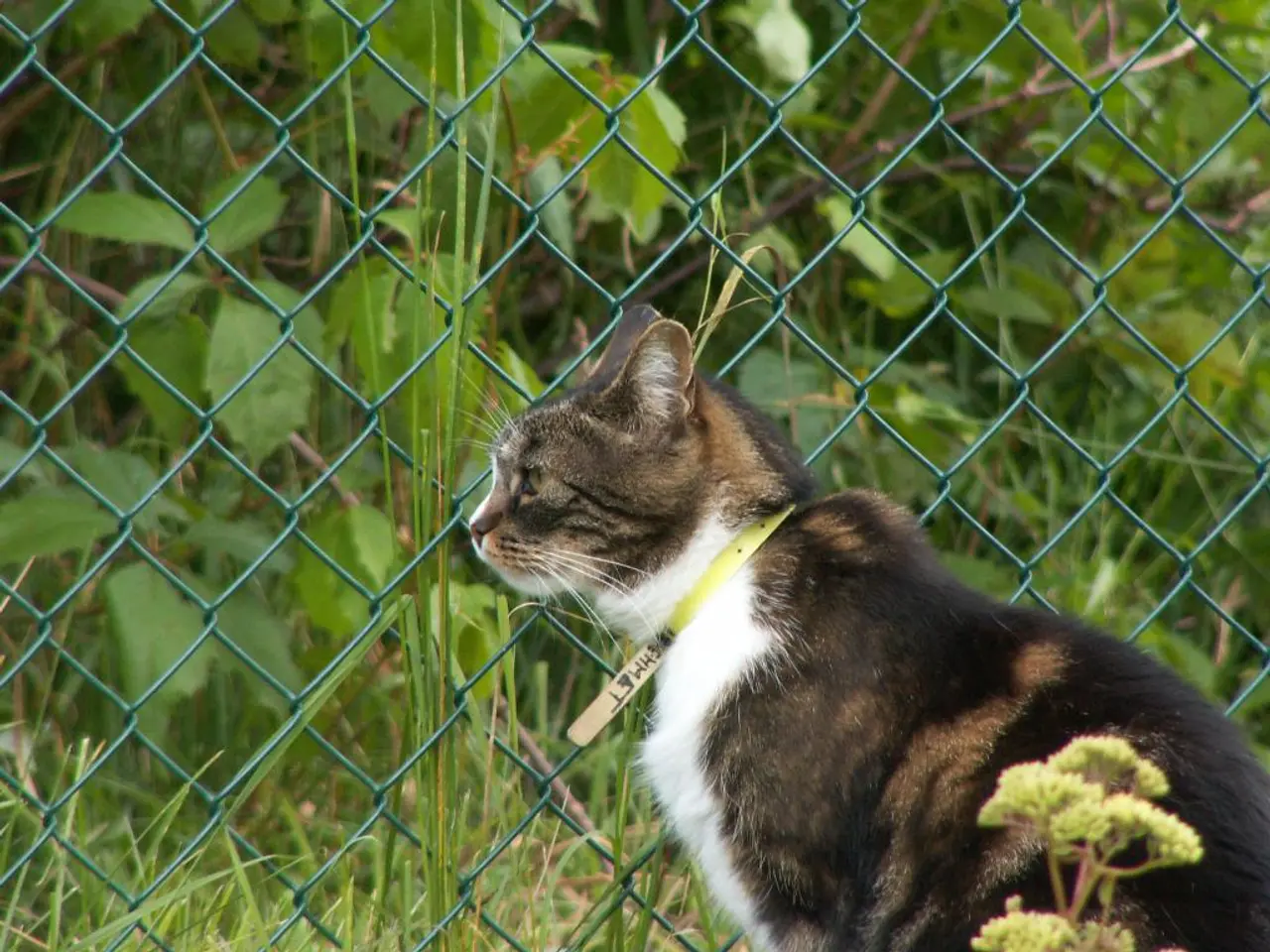Optimal Accompaniments for Catnip: 9 Plant choices to Ward off Pests
In the realm of gardening, catnip has earned a reputation as a multifaceted plant that not only offers visual charm but also serves as a natural pest repellent. Freelance editor, writer, and sustainable market gardener, Serena Manickam, shares insights into the best companions for catnip in a garden.
Catnip's pest-repelling properties make it an ideal choice for deterring a variety of insects, including aphids, cabbage loopers, and potato beetles. This makes it a valuable ally for other plants, particularly those that are susceptible to these pests.
Yarrow, a hardy and low-maintenance plant, is a strong companion for catnip. Yarrow attracts beneficial predatory insects such as ladybugs, lacewings, and parasitic wasps, which prey on common pests like aphids and thrips. Additionally, yarrow improves soil quality by enhancing nutrient content, benefiting neighbouring plants.
Herbs like thyme, basil, and rosemary are also excellent companions for catnip. These herbs generally pair well with many plants, enhancing pest resistance and growth vigour in the garden. Thyme, in particular, is known for being a versatile companion that supports many plants by repelling pests.
Flowering perennials such as purple basil, coral bells (Heuchera), coneflowers, salvia, yarrow, coreopsis, and daylilies complement catnip aesthetically and functionally. For example, yarrow and coreopsis add pest-control benefits alongside brightening the garden palette, while soft blue flowers of catnip pair nicely with reds, pinks, yellows, and purples in these perennials.
Hybrid tea roses are another suitable companion for catnip. Catnip traditionally is planted beneath roses to cover their base ("bare knees") and enhance the garden visually with complementary soft blue flowers while helping deter pests.
However, catnip's vigorous growth may inhibit the growth of some tender plants like lettuce. Therefore, careful consideration should be given to placement. Catnip also has a tendency to take over and may be best planted in a raised bed or other contained area where it is less likely to spread out of control.
Catnip's pest-repellent qualities extend to other members of the brassica family, such as collard greens, which can be protected from cabbage loopers. Similarly, catnip can help control squash bug populations when planted near pumpkin vines.
Zucchini, summer squash, and winter squash also benefit from catnip's insect-repelling trait, similar to pumpkins. Like its cousin broccoli, cauliflower can benefit from the pest-repellent qualities of catnip.
It is beneficial to place a few pots of catnip around the garden to help control insect pests. Catnip flowers also attract pollinators and predatory insects like parasitic wasps and lacewings, which feed on insect pests.
When grown in a container, catnip gets along well with and often benefits most other plants. However, it should not be planted near fennel due to fennel's growth-inhibiting compound.
Serena Manickam, who runs Fairydiddle Farm, a small market garden where she grows no-spray produce and herbs to sell at a local farmer's market, emphasises the importance of careful placement and companion selection for catnip. With its pest-repelling and pollinator-attracting qualities, catnip can be a valuable addition to any garden.
[1] Manickam, S. (2021). The Best Companion Plants for Catnip in a Garden. [online] Serenamanickam.com. Available at: https://serenamanickam.com/the-best-companion-plants-for-catnip-in-a-garden/ [Accessed 20 Mar. 2023]. [2] Manickam, S. (2019). Companion Planting for Catnip: The Ultimate Guide. [online] Serenamanickam.com. Available at: https://serenamanickam.com/companion-planting-for-catnip-the-ultimate-guide/ [Accessed 20 Mar. 2023]. [3] Manickam, S. (2020). The Benefits of Growing Catnip in Your Garden. [online] Serenamanickam.com. Available at: https://serenamanickam.com/the-benefits-of-growing-catnip-in-your-garden/ [Accessed 20 Mar. 2023]. [4] Manickam, S. (2018). 5 Benefits of Growing Catnip in Your Garden. [online] Serenamanickam.com. Available at: https://serenamanickam.com/5-benefits-of-growing-catnip-in-your-garden/ [Accessed 20 Mar. 2023].
- Serena Manickam, a sustainable market gardener, shares insights on the best companions for catnip in a garden, making it a valuable ally for other plants, especially the susceptible ones.
- Yarrow, herbs like thyme, basil, and rosemary, flowering perennials, and even certain vegetable plants are excellent companions for catnip, as they pair well, enhancing pest resistance and growth vigor.
- Despite catnip's pest-repelling qualities, it may inhibit the growth of tender plants like lettuce, so careful consideration should be given to placement and containment to prevent uncontrolled spreading.
- Catnip's pest-repellent qualities extend to other members of the brassica family, such as collard greens, and can help control squash bug populations when planted near pumpkin vines.
- Catnip flowers attract pollinators and predatory insects like parasitic wasps and lacewings, making it beneficial to place a few pots of catnip around the garden.
- Run by Serena Manickam, Fairydiddle Farm grows no-spray produce and herbs, emphasizing the importance of companion selection for catnip, making it a valuable addition to any garden lifestyle.




